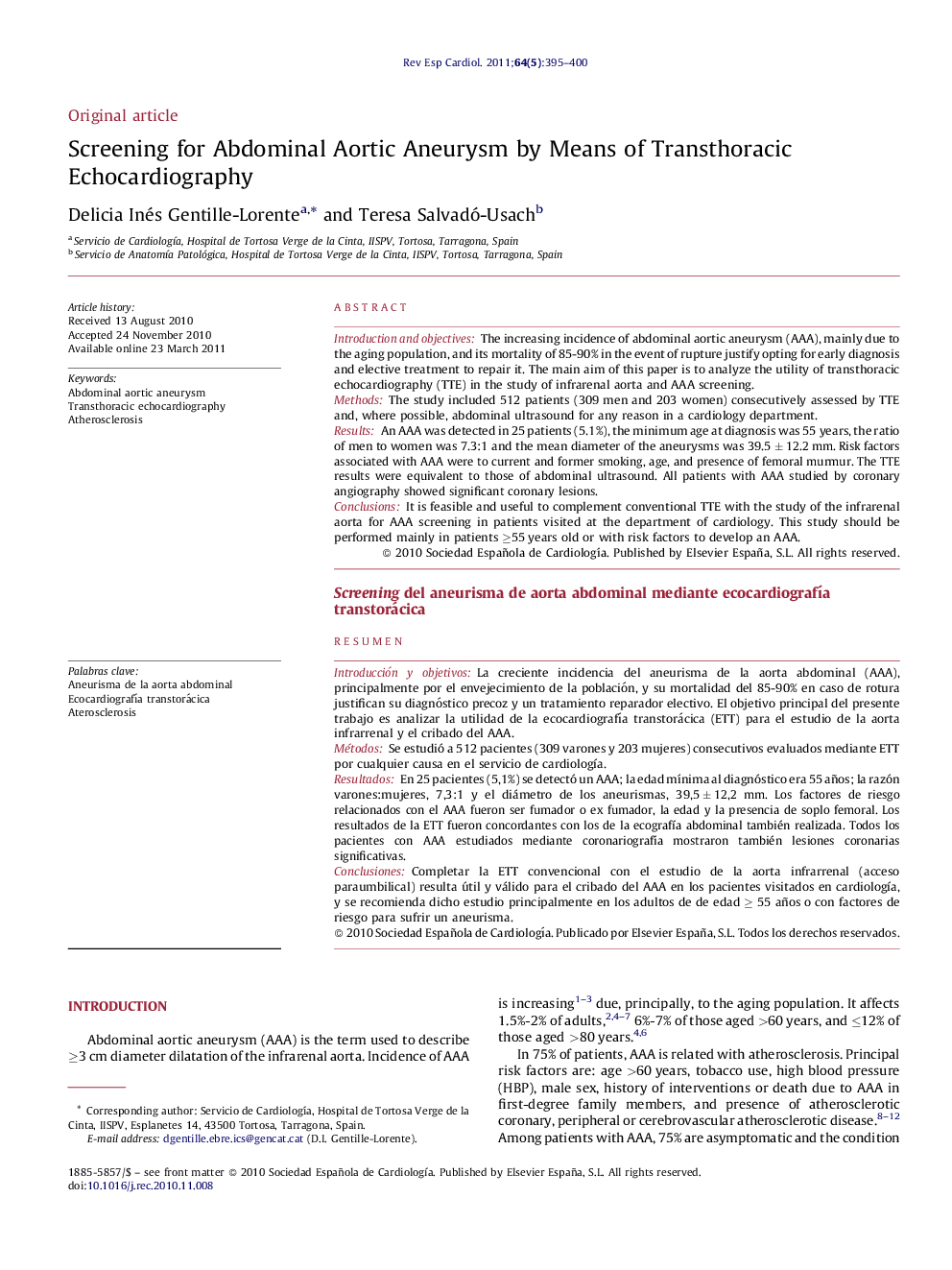| Article ID | Journal | Published Year | Pages | File Type |
|---|---|---|---|---|
| 3018306 | Revista Española de Cardiología (English Edition) | 2011 | 6 Pages |
Introduction and objectivesThe increasing incidence of abdominal aortic aneurysm (AAA), mainly due to the aging population, and its mortality of 85-90% in the event of rupture justify opting for early diagnosis and elective treatment to repair it. The main aim of this paper is to analyze the utility of transthoracic echocardiography (TTE) in the study of infrarenal aorta and AAA screening.MethodsThe study included 512 patients (309 men and 203 women) consecutively assessed by TTE and, where possible, abdominal ultrasound for any reason in a cardiology department.ResultsAn AAA was detected in 25 patients (5.1%), the minimum age at diagnosis was 55 years, the ratio of men to women was 7.3:1 and the mean diameter of the aneurysms was 39.5 ± 12.2 mm. Risk factors associated with AAA were to current and former smoking, age, and presence of femoral murmur. The TTE results were equivalent to those of abdominal ultrasound. All patients with AAA studied by coronary angiography showed significant coronary lesions.ConclusionsIt is feasible and useful to complement conventional TTE with the study of the infrarenal aorta for AAA screening in patients visited at the department of cardiology. This study should be performed mainly in patients ≥55 years old or with risk factors to develop an AAA.
ResumenIntroducción y objetivosLa creciente incidencia del aneurisma de la aorta abdominal (AAA), principalmente por el envejecimiento de la población, y su mortalidad del 85-90% en caso de rotura justifican su diagnóstico precoz y un tratamiento reparador electivo. El objetivo principal del presente trabajo es analizar la utilidad de la ecocardiografía transtorácica (ETT) para el estudio de la aorta infrarrenal y el cribado del AAA.MétodosSe estudió a 512 pacientes (309 varones y 203 mujeres) consecutivos evaluados mediante ETT por cualquier causa en el servicio de cardiología.ResultadosEn 25 pacientes (5,1%) se detectó un AAA; la edad mínima al diagnóstico era 55 años; la razón varones:mujeres, 7,3:1 y el diámetro de los aneurismas, 39,5 ± 12,2 mm. Los factores de riesgo relacionados con el AAA fueron ser fumador o ex fumador, la edad y la presencia de soplo femoral. Los resultados de la ETT fueron concordantes con los de la ecografía abdominal también realizada. Todos los pacientes con AAA estudiados mediante coronariografía mostraron también lesiones coronarias significativas.ConclusionesCompletar la ETT convencional con el estudio de la aorta infrarrenal (acceso paraumbilical) resulta útil y válido para el cribado del AAA en los pacientes visitados en cardiología, y se recomienda dicho estudio principalmente en los adultos de de edad ≥ 55 años o con factores de riesgo para sufrir un aneurisma.
